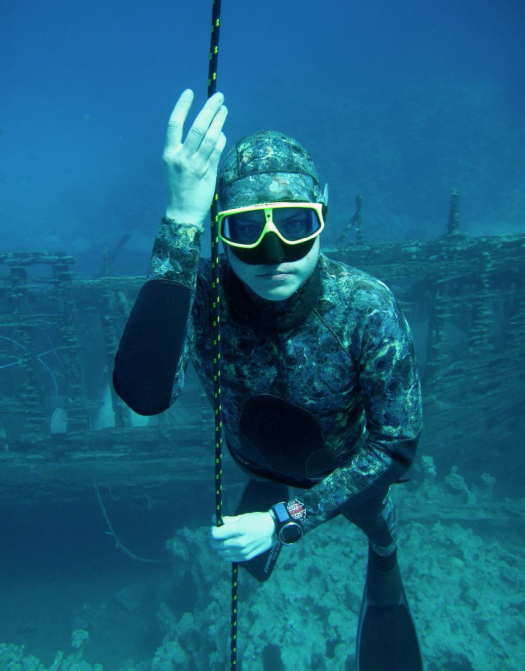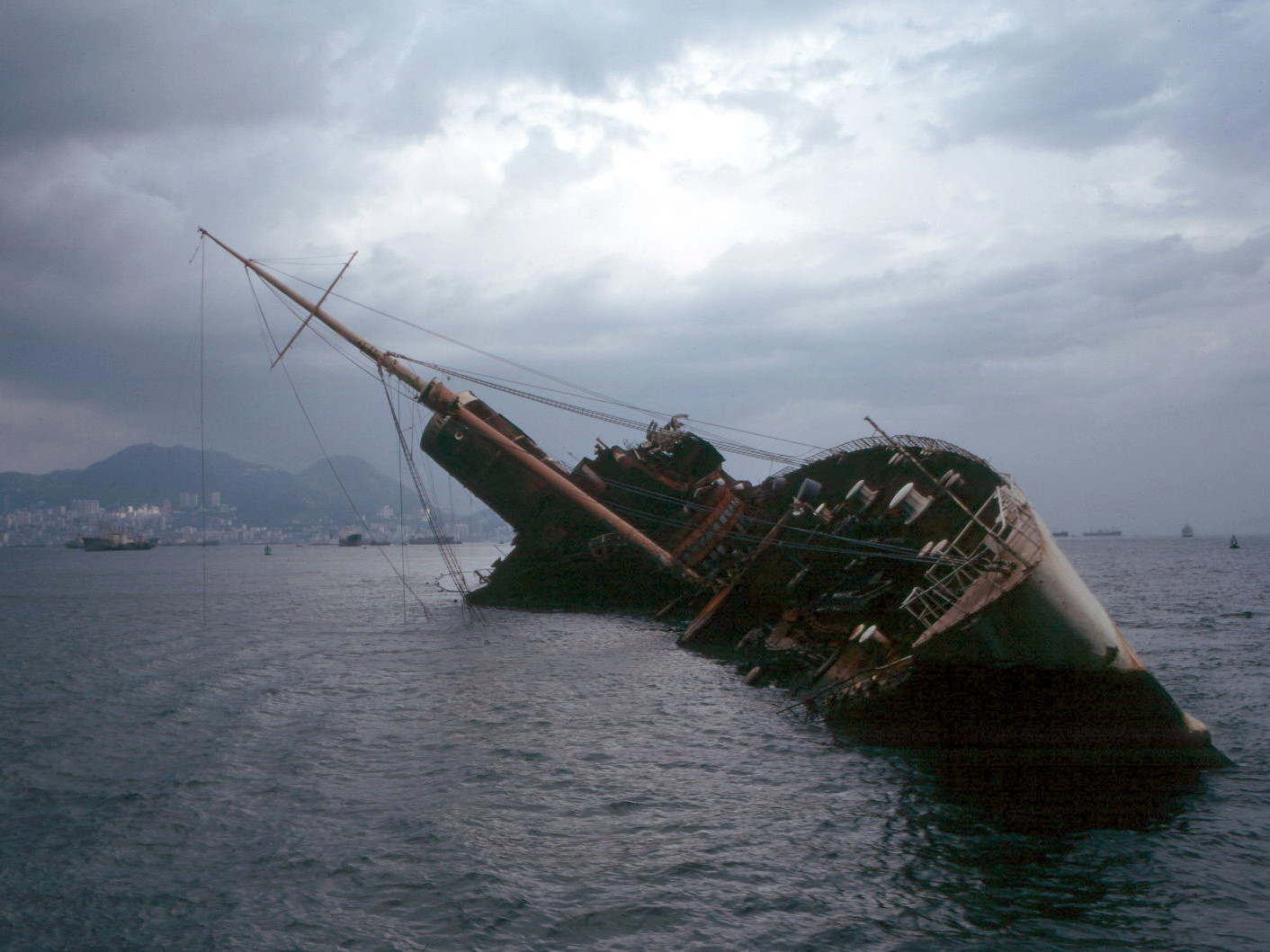|
Freediving
Freediving, free-diving, free diving, breath-hold diving, or skin diving, is a mode of underwater diving that relies on breath-holding until resurfacing rather than the use of breathing apparatus such as scuba gear. Besides the limits of breath-hold, immersion in water and exposure to high ambient pressure also have physiological effects that limit the depths and duration possible in freediving. Examples of freediving activities are traditional fishing techniques, competitive and non-competitive freediving, competitive and non-competitive spearfishing and freediving photography, synchronised swimming, underwater football, underwater rugby, underwater hockey, underwater target shooting and snorkeling. There are also a range of "competitive apnea" disciplines; in which competitors attempt to attain great depths, times, or distances on a single breath. Historically, the term ''free diving'' was also used to refer to scuba diving, due to the freedom of movement compared wi ... [...More Info...] [...Related Items...] OR: [Wikipedia] [Google] [Baidu] |
Freediving Blackout
Freediving blackout, breath-hold blackout, or apnea blackout is a class of hypoxic blackout, a Unconsciousness, loss of consciousness caused by cerebral hypoxia towards the end of a breath-hold (freedive or dynamic apnea) dive, when the swimmer does not necessarily experience an urgent need to breathe and has no other obvious medical condition that might have caused it. It can be provoked by hyperventilation, hyperventilating just before a dive, or as a consequence of the pressure reduction on ascent, or a combination of these. Victims are often established practitioners of breath-hold diving, are fit, strong swimmers and have not experienced problems before. Blackout may also be referred to as a syncope (medicine), syncope or fainting. Divers and swimmers who black out or Greyout (medical), grey out underwater during a dive will usually Drowning, drown unless rescued and resuscitated within a short time. Freediving blackout has a high fatality rate, and mostly involves males younge ... [...More Info...] [...Related Items...] OR: [Wikipedia] [Google] [Baidu] |
Apnea
Apnea (also spelled apnoea in British English) is the temporary cessation of breathing. During apnea, there is no movement of the muscles of inhalation, and the volume of the lungs initially remains unchanged. Depending on how blocked the airways are ( patency), there may or may not be a flow of gas between the lungs and the environment. If there is sufficient flow, gas exchange within the lungs and cellular respiration would not be severely affected. Voluntarily doing this is called holding one's breath. Apnea may first be diagnosed in childhood, and it is recommended to consult an ENT specialist, allergist or sleep physician to discuss symptoms when noticed; malformation and/or malfunctioning of the upper airways may be observed by an orthodontist. Cause Apnea can be involuntary—for example, drug-induced (such as by opiate toxicity), mechanically / physiologically induced (for example, by strangulation or choking), or a consequence of neurological disease or tra ... [...More Info...] [...Related Items...] OR: [Wikipedia] [Google] [Baidu] |
Underwater Diving
Underwater diving, as a human activity, is the practice of descending below the water's surface to interact with the environment. It is also often referred to as diving (other), diving, an ambiguous term with several possible meanings, depending on context. Immersion in water and exposure to high ambient pressure have Physiology, physiological effects that limit the depths and duration possible in ambient pressure diving. Humans are not physiologically and anatomically well-adapted to the environmental conditions of diving, and various equipment has been developed to extend the depth and duration of human dives, and allow different types of work to be done. In ambient pressure diving, the diver is directly exposed to the pressure of the surrounding water. The ambient pressure diver may dive on breath-hold (freediving) or use breathing apparatus for scuba diving or surface-supplied diving, and the saturation diving technique reduces the risk of decompression sickness ... [...More Info...] [...Related Items...] OR: [Wikipedia] [Google] [Baidu] |
Spearfishing
Spearfishing is fishing using handheld elongated, sharp-pointed tools such as a spear, gig, or harpoon, to impale the fish in the body. It was one of the earliest fishing techniques used by mankind, and has been deployed in artisanal fishing throughout the world for millennia. Early civilizations were familiar with the custom of spearing fish from rivers and streams using sharpened sticks. Modern spearfishing usually involves the use of underwater swimming gear and slingshot-like elastic spearguns or compressed gas powered pneumatic spearguns, which launch a tethered dart-like projectile to strike the target fish. Specialised techniques and equipment have been developed for various types of aquatic environments and target fish. Spearfishing uses no bait and is highly selective, with no by-catch, but inflicts lethal injury to the fish and thus precludes catch and release. Spearfishing may be done using free-diving, snorkelling, or scuba diving techniques, but spearfish ... [...More Info...] [...Related Items...] OR: [Wikipedia] [Google] [Baidu] |
Skandalopetra
diving () dates from ancient Greece, when it was used by sponge fishermen, and has been re-discovered in recent years as a freediving discipline. It was in this discipline that the first world record in freediving was registered, when the Greek sponge fisherman Stathis Chantzis dived to a depth of 83 m (272 ft) in July 1913. It consists of a variable ballast dive using a tied to a rope. A companion on a boat recovers the diver by pulling the rope up after the descent, and keeps a watch on the diver from the surface. Origins A skandalopetra dive known to contemporary divers is that of Stathis Chantzis, a Greek sponge fisherman. On 14 July 1913, in the Karpathos port, Chantzis recovered the lost anchor of the Regina Margherita, a ship of the Italian Navy, at the depth of 83 m. His feat is considered the first depth record in apnea diving. The , or simply (), is a stone, usually of marble or granite, weighing between 8 and 14 kg, with rounded corners and hydrodynamic shape. ... [...More Info...] [...Related Items...] OR: [Wikipedia] [Google] [Baidu] |
Snorkeling
Snorkeling (American and British English spelling differences#Doubled in British English, British and Commonwealth English spelling: snorkelling) is the practice of human swimming, swimming face down on or through a body of water while breathing the ambient air through a shaped tube called a Snorkel (swimming), snorkel, usually with swimming goggles or a diving mask, and swimfins. In cooler waters, a wetsuit may also be worn. The snorkel may be an independent item or integrated with the mask. The use of this equipment allows the snorkeler to observe the underwater environment for extended periods with relatively little effort, and to breathe while face-down at the surface. Snorkeling is a popular recreational activity, particularly at tropics, tropical resort locations. It provides the opportunity to observe marine biology#Lifeforms, underwater life in a natural setting without the complicated equipment and training required for scuba diving. It appeals to all ages because of ho ... [...More Info...] [...Related Items...] OR: [Wikipedia] [Google] [Baidu] |
Underwater Target Shooting
Underwater target shooting is an underwater sport/shooting sport that tests a competitors’ ability to accurately use a speargun via a set of individual and team events conducted in a swimming pool using freediving or apnea technique. The sport was developed in France during the early 1980s and is currently practiced mainly in Europe. It is known as ''tir sur cible subaquatique'' in French and as ''tiro al blanco subacuático'' in Spanish. Competitor admission requirements Competitors must be 18 years of age in order to participate in International events while National competitions in some countries such as France include age classifications for juniors and masters. The sport allows completion by both men and women. Individual events while conducted as mixed gender activities do have distinct men's and women's titles. Equipment Personal Each competitor is required to have the following equipment: diving mask, fins, snorkel, speargun, diving weighting system and an exp ... [...More Info...] [...Related Items...] OR: [Wikipedia] [Google] [Baidu] |
Surface Supplied Diving
Surface-supplied diving is a mode of underwater diving using equipment supplied with breathing gas through a diver's umbilical from the surface, either from the shore or from a diving support vessel, sometimes indirectly via a diving bell. This is different from scuba diving, where the diver's breathing equipment is completely self-contained and there is no essential link to the surface. The primary advantages of conventional surface supplied diving are lower risk of drowning and considerably larger breathing gas supply than scuba, allowing longer working periods and safer decompression. Disadvantages are the absolute limitation on diver mobility imposed by the length of the umbilical, encumbrance by the umbilical, and high logistical and equipment costs compared with scuba. The disadvantages restrict use of this mode of diving to applications where the diver operates within a small area, which is common in commercial diving work. The copper helmeted free-flow standard di ... [...More Info...] [...Related Items...] OR: [Wikipedia] [Google] [Baidu] |
Scuba Diving
Scuba diving is a Diving mode, mode of underwater diving whereby divers use Scuba set, breathing equipment that is completely independent of a surface breathing gas supply, and therefore has a limited but variable endurance. The word ''scuba'' is an Acronym#Normal case and acronyms, acronym for "Self-Contained Underwater Breathing Apparatus" and was coined by Christian J. Lambertsen in a patent submitted in 1952. Scuba divers carry their own source of breathing gas, affording them greater independence and movement than surface-supplied divers, and more time underwater than freedivers. Although the use of compressed air is common, other gas blends are also used. Open-circuit scuba systems discharge the breathing gas into the environment as it is exhaled and consist of one or more diving cylinders containing breathing gas at high pressure which is supplied to the diver at ambient pressure through a diving regulator. They may include additional cylinders for range extension, de ... [...More Info...] [...Related Items...] OR: [Wikipedia] [Google] [Baidu] |
Underwater Hockey
Underwater hockey (UWH), also known as Octopush in the United Kingdom, is a globally played limited-contact sport in which two teams compete to manoeuvre a puck across the bottom of a swimming pool into the opposing team's goal by propelling it with a hockey stick (or pusher). A key challenge of the game is that players are not able to use breathing devices such as scuba gear whilst playing, they must hold their breath. The game originated in Portsmouth, England in 1954 when Alan Blake, a founder of the newly formed Southsea Sub-Aqua Club, invented the game he called Octopush as a means of keeping the club's members interested and active over the cold winter months when open-water diving lost its appeal. Underwater hockey is now played worldwide, with the Confédération Mondiale des Activités Subaquatiques, abbreviated CMAS, as the world governing body. The first Underwater Hockey World Championship was held in Canada in 1980. History Originally called "Octopush" (and ... [...More Info...] [...Related Items...] OR: [Wikipedia] [Google] [Baidu] |
Marine Salvage
Marine salvage is the process of recovering a ship and its cargo after a shipwreck or other maritime casualty. Salvage may encompass towing, lifting a vessel, or effecting repairs to a ship. Salvors are normally paid for their efforts. However, protecting the coastal environment from oil spillages or other Contamination, contaminants from a modern ship can also be a motivator, as oil, cargo, and other pollutants can easily leak from a wreck and in these instances, governments or authorities may organise the salvage. Before the invention of radio, salvage services would be given to a stricken vessel by any passing ship. Today, most salvage is carried out by specialist salvage firms with dedicated crews and equipment. Law of salvage, The legal significance of salvage is that a successful salvorsalvor: A person or company involved in salvage activities. is entitled to a reward, which is a proportion of the total value of the ship and its cargo. The bounty is determined subsequen ... [...More Info...] [...Related Items...] OR: [Wikipedia] [Google] [Baidu] |







